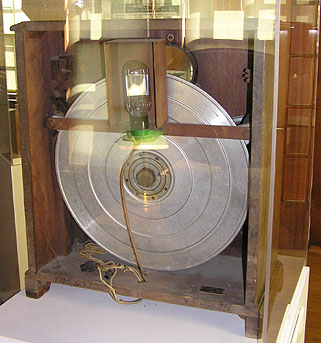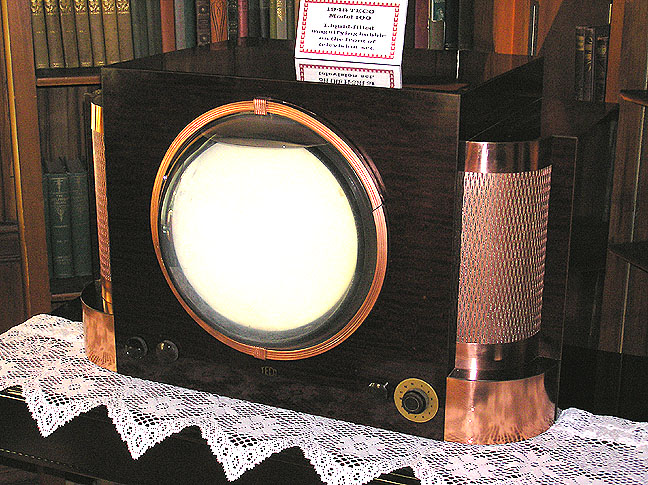
It has been more than 60 years since Birmingham first started receiving high quality television signals from Detroit. Tom Genova has an excellent collection of ancient TV receivers. One of them is a 1929 Western Television, produced and sold in the Chicago area. It is an example of an experimental mechanical system, that never reached commercial status, and was used briefly in the late 1920s and early 1930s. The picture displayed was orange & black in color, and about the size of a business card. Genova admits that few people know that mechanical TV sets existed before the electronic receivers we have today. They had 48 line picture definition while the U.S. standard for analog television has been 525 lines since the end of WWII. HDTV has over twice that resolution today.

Since the actual TV picture produced by this Western Television Receiver was only about an inch square, a magnifying glass, prominently visible in this photo, was used to provide an illusion of a larger image for audiences viewing the set.

This rear view of the Western Television cabinet shows how large the rotating disc which helped to produce the TV image actually was.

This closeup will help you understand how the old mechanical TV's actually worked. The item in the foreground, which looks much like a light bulb or vacuum tube is actually a neon lamp. The shiny object inside the neon lamp is what lit up as the image was being transmitted. If a section of the picture was dark, the bulb would go out. If another section of the picture was bright, the plate would glow a bright red. The actual TV image did not appear on this electrode. It merely provided the source of light for the picture. If you look very closely at the aluminum scanning disk which rotated in front of the neon lamp you will see numerous tiny dots. These are actually holes through which the light from the neon lamp passed on its way to the viewer who was peering into the magnifying glass on the front of the receiver. There were 48 holes drilled in a spiral pattern on the rotating disc. Each hole would pass the neon electrode in a slightly different position. It took a complete rotation of the disc to expose the entire electrode to the viewer. As the disc was rotating, the brightness of the neon electrode was constantly changing to provide the proper brilliance for that portion of the image which was being passed through one of the tiny holes at that moment. A full rotation of the disc was required to produce a complete image of a single TV picture frame.

By 1948, television was beginning to catch on as the newest form of home entertainment. Over a thousand companies began to produce sets for use by the general public. One such unit was the TECO Model 100, shown above. Unlike the early mechanical TV's with their tiny, fuzzy pictures, the new receivers boasted electronic picture tubes with relatively high definition. However, large picture tubes were expensive. Consequently, smaller tubes were often used and some sort of magnifying device placed in front of them. This TECO utilized a liquid filled magnifier to enlarge the image which it produced.

Through the years TV pictures became larger and larger. However, watchmaker Seiko thought it would be interesting to produce a tiny, wristwatch size receiver. Shown above is their 1982 Wrist TV, a novelty item that never achieved great popularity.
If you wish to LEARN more about the City's past and see many ancient photographs as well as historic objects you should visit the BIRMINGHAM HISTORICAL MUSEUM & PARK located on the north side of Maple at Southfield.